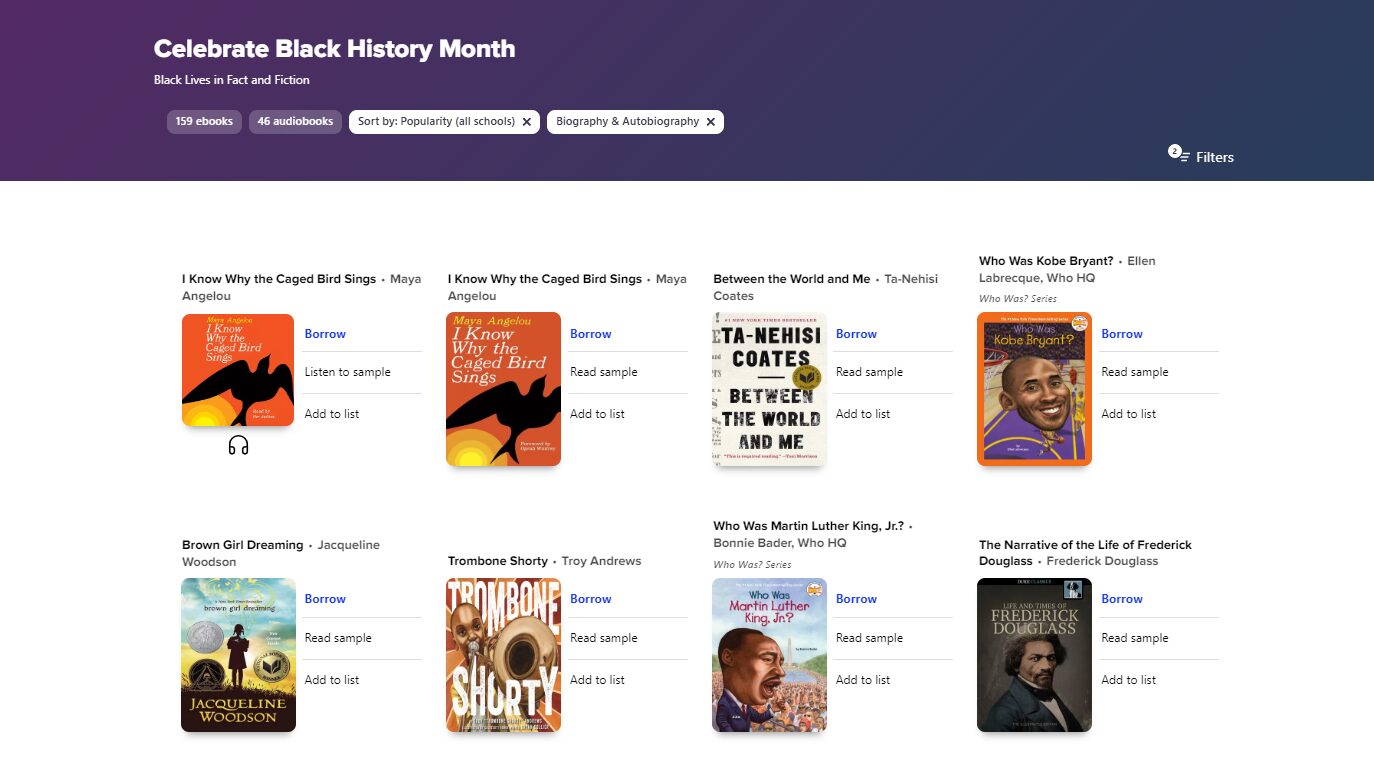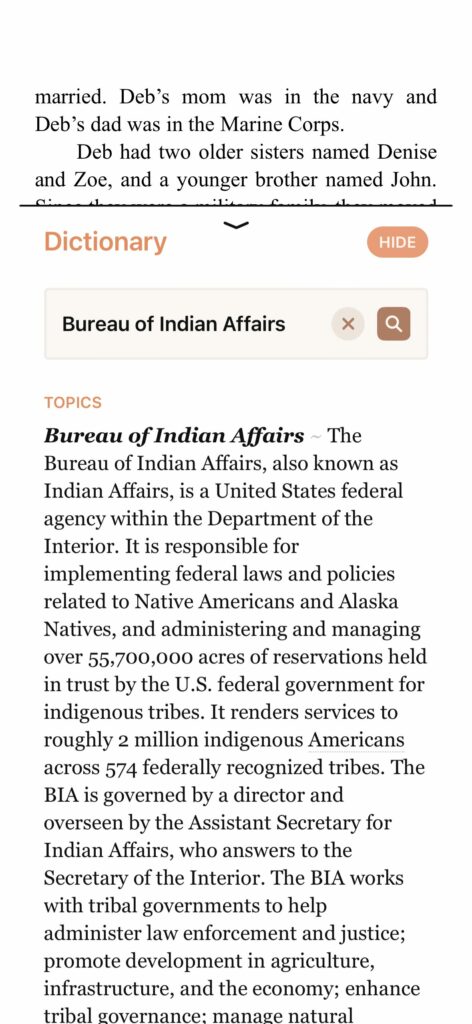![SAMR model-based lesson ideas to bring digital books into history class [Sora in the Classroom Series]](https://companyoverdrive.cdn.overdrive.com/wp-content/uploads/2024/02/2024-sora-in-the-classroom-history-blog-feature-image-1000x667-1-660x420.jpg)
SAMR model-based lesson ideas to bring digital books into history class [Sora in the Classroom Series]
In this recurring Sora in the Classroom series, we discuss lesson ideas that utilize Sora to support your state and district technology and curriculum requirements in all subject areas. Previous posts have discussed how Sora can be used in ELA, science, and math.
Today, in part four of this series, you’ll learn how to incorporate Sora into your history classroom using the SAMR model.
The SAMR model focuses on four methods of online learning:
- Substitution: Teachers and students use technology as a substitute for physical materials and activities, but the content stays the same.
- Augmentation: Teachers may incorporate digital links, online games, or apps to enhance their lesson.
- Modification: Teachers use their Learning Management System, such as Google Classroom, Schoology, or Canvas, to deliver the lesson.
- Redefinition: These lessons are things that could not be done without technology, such as online pen pals, virtual field trips, or listening to audiobooks.
Below, check out Sora history lesson ideas using the SAMR model.
Substitution and Augmentation:
Create a Content Bundle or curated list with a list of biographies. Each student will choose one biography to read. While reading, students should utilize the bookmark tool and notes tool in Sora to keep track of important facts about the historical figure’s life. The end project will be to create a living wax museum. After reading their biography in Sora, each student will need to dress up as their chosen historical figure and give a short speech or presentation of what they learned.
When all students are dressed up as their historical figures, you can take class pictures of them “frozen” in museum-like poses as their person.
- Other theme ideas: “Changemakers in History” or “Women in History”

 Modification:
Modification:
Create an assignment in your learning management system (such as Google Classroom) that requires students to complete a scavenger hunt with a nonfiction ebook or magazine. Example activities can include:
- Finding the title’s publication information to determine the date’s relevance
- Identifying bias in their ebook or magazine article
- Citing their source correctly using the contents page
- Defining unknown words by holding on them and clicking “define.” They can then scroll to the bottom to explore more about the topic on other trusted websites.
Once found in Sora, students can take notes, export their notes to Google Drive, then attach them to the Google Classroom assignment for credit.
Redefinition:
Lesson option #1
For this lesson, create a Content Bundle or curated list of audiobooks of historical texts. Students then need to listen to the audiobook and pay specific attention to the language used, answering questions like:
- Are words or phrases said differently than they are today?
- How do words evolve as civilization evolves?
- What role does language play in history?
- What do you think listeners will find interesting 100 years from now when listening to audiobooks from today?
Extension Activity
Students can discuss differing perspectives on an event throughout time. How does our current interpretation of historical events differ from perspectives at the time it happened?
Lesson option #2
For this lesson, create a Content Bundle or curated list of audiobooks from a specific historical era. Then put students into groups and assign each group an audiobook (or let them choose one). Each group must choose one scene from their audiobook that captures something important from that historical era. Using the audiobook as their narrator, the groups will act out a skit to perform to the class. When all groups have acted out their skits, the students can respond to various history related questions on the skits, including:
- How did each group depict the historical references in their skit?
- Was it challenging to act to a narrator versus having your own voice?
- If you could have input your own voice, what would you have done?
- Why did you depict the characters the way you did?
- Did anyone use the tool to slow down the narration of the audiobook to better act out the scene?
Extension Activity
Choose a play, like Romeo and Juliet or A Christmas Carol, from a specific time period and act it out using Reader’s Theater.
More ways to use Sora in the classroom
The history lessons above bring digital skills into your classroom and address the different levels of the SAMR model while meeting your curricular requirements.
Reach out to your OverDrive team as you explore using Sora in your classroom and subscribe to our blog to receive an alert when the next lesson in the series, focused on electives, is live.
Plus, don’t forget to check out our previous posts for incorporating Sora into your ELA, science, and math lessons.
Creative lesson plan ideas for math ebooks [Sora in the Classroom Series]
About the author:
 Carley Cook is a Product Support Specialist working with schools in New York, Georgia, Arkansas, and Tennessee. She previously worked as a reading specialist for students in grades K-5, a 4th grade social studies and English language arts teacher, and a figure skating coach. In her free time, she loves reading, cooking, and traveling to new places.
Carley Cook is a Product Support Specialist working with schools in New York, Georgia, Arkansas, and Tennessee. She previously worked as a reading specialist for students in grades K-5, a 4th grade social studies and English language arts teacher, and a figure skating coach. In her free time, she loves reading, cooking, and traveling to new places.
Many thanks to the OverDrive Educators group for their contributions to this blog post.
Tags In
Browse blog and media articles
Public Library Training
K-12 Library Training